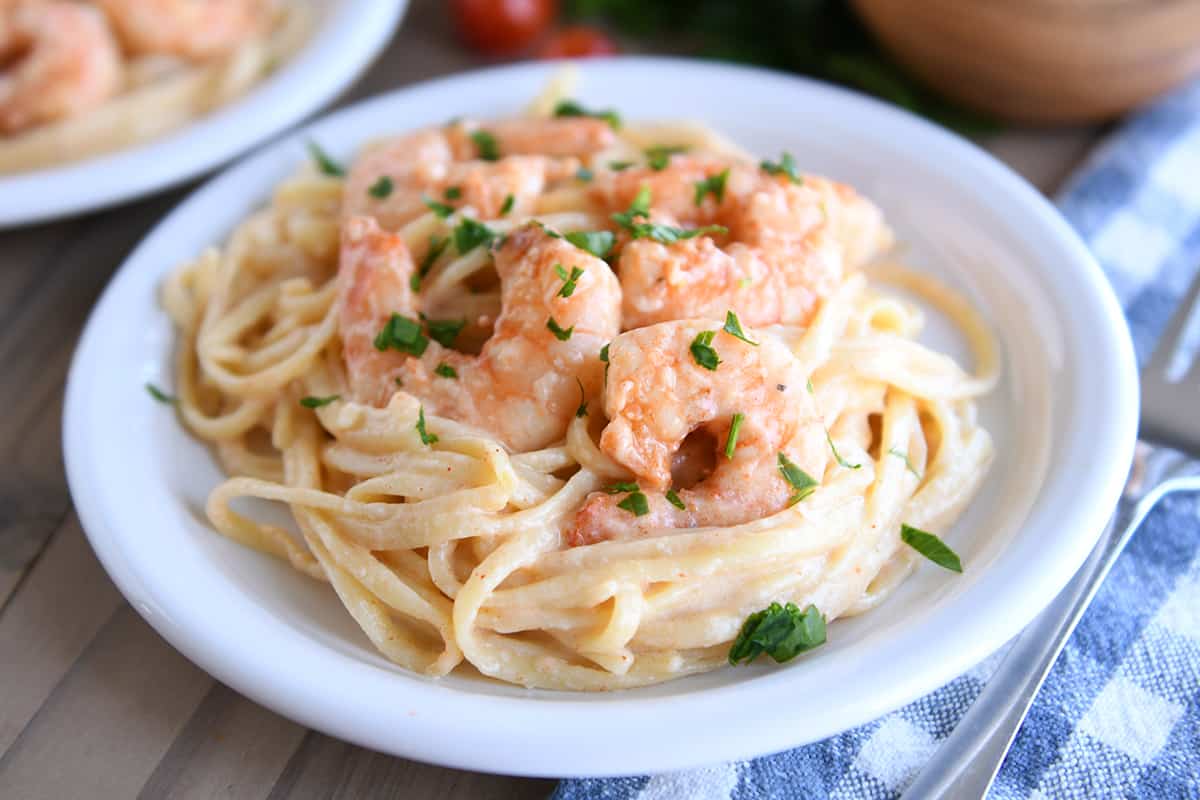Shrimp pasta is a beloved dish in many households for its delightful combination of flavors and textures. Whether it's a quick weeknight dinner or a special occasion meal, mastering the art of cooking shrimp pasta can elevate your culinary skills. In this guide, we'll walk you through the steps to create a delicious plate of perfectly cooked shrimp pasta that will impress your family and friends.
Selecting Ingredients

To begin your shrimp pasta journey, you'll need to gather the right ingredients. Start by selecting high-quality shrimp, preferably fresh and deveined. The size of the shrimp can vary based on your preference, but medium to large-sized shrimp work well for this dish. Additionally, choose the type of pasta that complements the shrimp, such as linguine, fettuccine, or spaghetti.
Preparation
Before you start cooking, it's essential to prepare the ingredients properly. Peel and devein the shrimp, removing any shells or veins. Pat them dry with paper towels to ensure they cook evenly. As for the pasta, cook it al dente according to the package instructions, as it will continue to cook later when combined with the sauce.
Making the Sauce
The sauce is what brings the shrimp pasta together, and there are various options to explore. For a classic touch, you can prepare a traditional tomato-based sauce using fresh tomatoes, garlic, onions, and herbs like basil and oregano. Alternatively, for a creamy indulgence, consider making a garlic cream sauce with heavy cream, Parmesan cheese, and garlic.
Cooking the Shrimp

Once your sauce is ready, it's time to cook the shrimp. There are several methods you can use, but two popular options include pan-searing and grilling. To pan-sear the shrimp, heat olive oil in a skillet over medium-high heat and cook the shrimp for 2-3 minutes on each side until they turn pink and opaque. If you prefer grilling, thread the shrimp onto skewers and grill them for 2-3 minutes per side until cooked through.
Combining Ingredients
With the pasta cooked, the sauce prepared, and the shrimp cooked to perfection, it's time to bring everything together. In a large mixing bowl, toss the cooked pasta with the sauce until evenly coated. Then, gently fold in the cooked shrimp, ensuring they are distributed throughout the dish.
Garnishing and Serving
To add the finishing touches to your shrimp pasta, consider garnishing it with fresh herbs like parsley or basil for a burst of flavor and color. Serve the pasta hot, plated elegantly, and accompanied by crusty bread or a side salad for a complete meal.
Tips for Perfectly Cooked Shrimp Pasta
- Season the shrimp generously with salt, pepper, and any other desired seasonings before cooking.
- Avoid overcooking the shrimp, as they can become tough and rubbery.
- Use a timer to ensure the pasta is cooked al dente, as it will continue to cook when combined with the sauce.
Variations and Additions
Feel free to customize your shrimp pasta recipe with additional ingredients. Add sautéed vegetables like bell peppers, mushrooms, or spinach for extra flavor and nutrition. Alternatively, if shrimp isn't your favorite protein, you can substitute it with chicken, scallops, or even tofu for a vegetarian option.
Pairing Suggestions
When it comes to pairing wine with shrimp pasta, opt for a crisp white wine like Pinot Grigio or Sauvignon Blanc to complement the seafood flavors. For those who prefer red wine, a light-bodied Pinot Noir or Chianti can also be delightful. As for side dishes, consider serving garlic bread, roasted vegetables, or a Caesar salad to round out the meal.
Common Mistakes to Avoid

- Overcooking the shrimp can result in a tough and rubbery texture. Cook them just until they turn pink and opaque.
- Avoid drowning the pasta in sauce, as it can overpower the delicate flavors of the shrimp.
- Be cautious with salt when seasoning the dish, as both the shrimp and sauce may already contain salt.
Conclusion
Making perfectly cooked shrimp pasta may seem daunting at first, but with the right techniques and ingredients, anyone can master this delicious dish. By following the steps outlined in this guide, you'll be able to create a restaurant-quality meal right in your own kitchen. So grab your apron and get ready to impress your taste buds with a plate of delectable shrimp pasta!
FAQs
Q. How do I know when the shrimp is cooked?
Ans: Shrimp are cooked when they turn pink and opaque. Avoid overcooking them, as they can become tough and rubbery.
Q. Can I use frozen shrimp for this recipe?
Ans: Yes, you can use frozen shrimp, but make sure to thaw them properly before cooking. Pat them dry with paper towels to remove excess moisture before cooking.
Q. How long does it take to cook shrimp pasta?
Ans: Cooking times may vary, but typically shrimp pasta can be prepared in under 30 minutes, making it a quick and easy meal option.
Q. Can I substitute other types of pasta?
Ans: Absolutely! Feel free to experiment with different pasta shapes and varieties to suit your preferences.
Q. What should I do if I don't have fresh herbs for garnish?
Ans: You can use dried herbs as a substitute, or simply omit the garnish altogether. The herbs add flavor and visual appeal but are not essential to the dish's success.